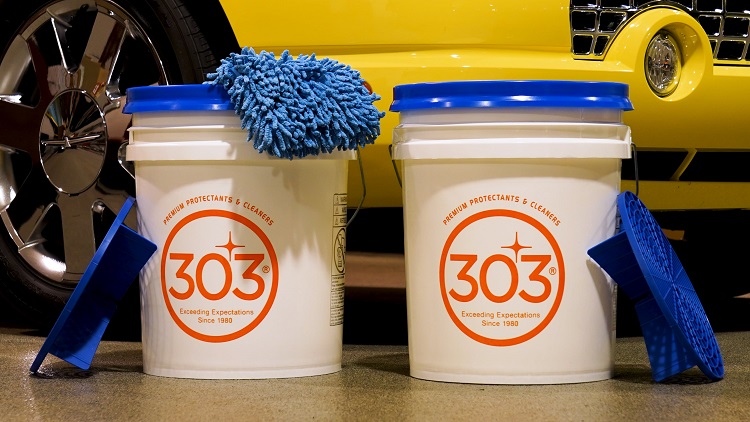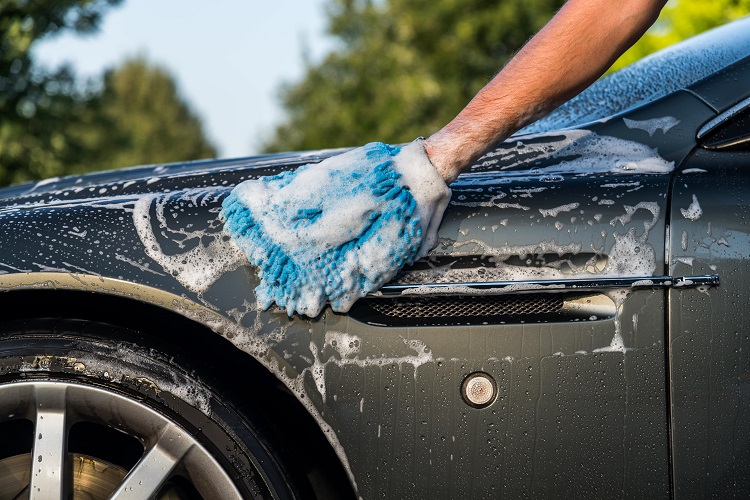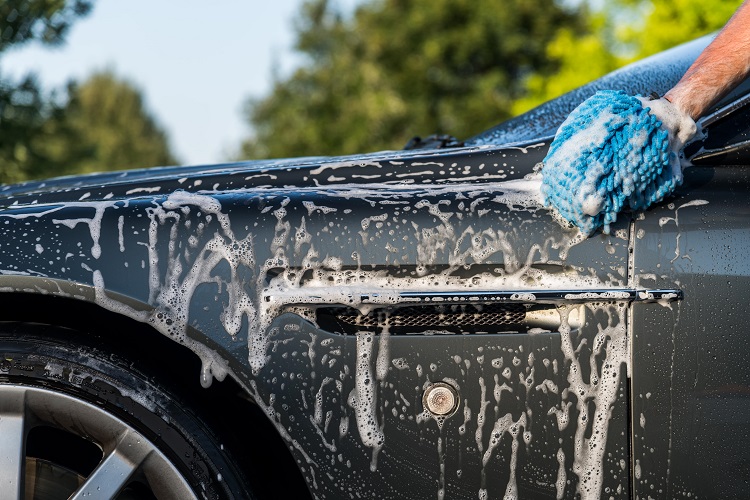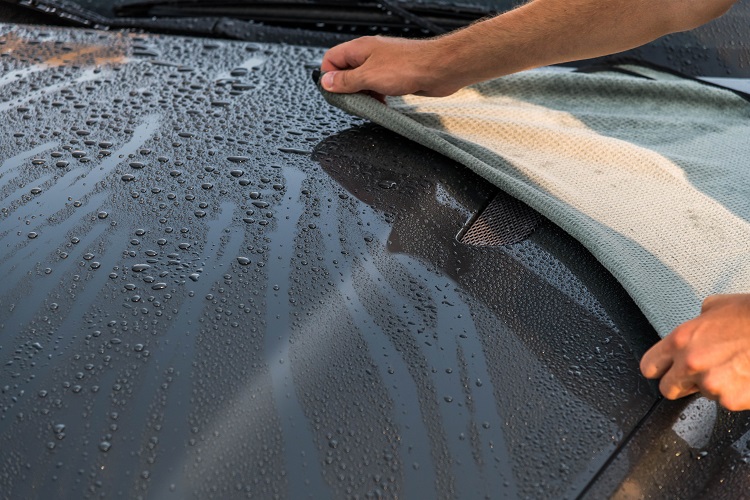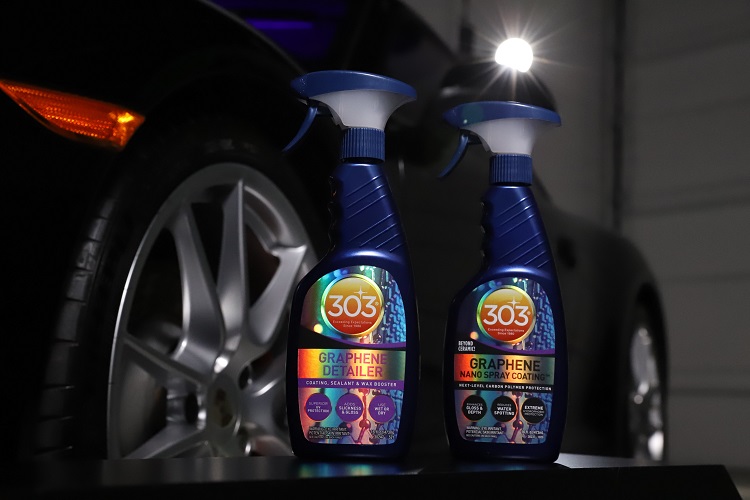5 Tips For A Perfect Hand Car Wash
Have you ever wondered what it takes to achieve the perfect hand car wash? It’s not as intimidating as you have been led to believe. In fact, you can achieve great results by using the following five basic tips. Keep these in mind the next time you want to hand wash your car the right way.
1. Have 2 Buckets – Rinse & Wash
This one sounds pretty simple, but you’d be surprised at the number of people who try getting by on one wash bucket. But you can’t get by on a single bucket if you want to do the job right. You need to have a rinse bucket containing only water and a second filled with soap and water to use as your proper wash bucket. Having two separate buckets is the only way to ensure your wash mitt remains uncontaminated when moving from panel to panel. Make it a point to use the rinse bucket to clear all lingering dirt and debris from the wash mitt after each panel. By the time you are done, the soapy water in your wash bucket should still look relatively clean, while your rinse bucket should appear dirty.
2. Use A Straight Back & Forth Motion
Your technique is everything when it comes to hand washing a car. Go too quickly, and you might miss some areas. Use a faulty motion, and your vehicle won’t look as clean as you’d like it to be. Ultimately, your end result will show you if you used the right technique. Use a straight back and forth motion with your wash mitt as you go over each panel. It might be tempting to use a circular pattern made famous by Mr. Miyagi in the Karate Kid, but the fictional sensei’s teaching applies to parrying a jab in a martial arts competition. Hand car washing is an entirely different skill set that will translate to a clean, happy car you can enjoy in real life. So remember straight motions, not circular.
3. Wash From The Top Down & Go Front To Back
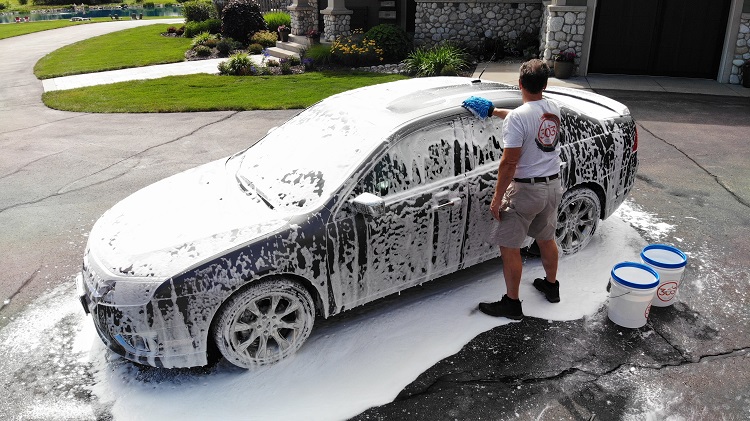
Where you begin washing your car is equally as important as your technique. Always start at the top of your vehicle and work your way back. With this in mind, focus on one panel (section) at a time, starting with the roof. Dip your mitt in the bucket filled with a concentrated car wash, otherwise known as the soapy wash bucket, and rinse when complete. From there, you should move to the following sections in this order: front hood, trunk, front quarter panel, doors, rear quarter panel, front grille & bumper, and rear bumper. It’s important to wash each vehicle section in this order since you want to start with the cleanest parts of the car first and work up to the dirtiest areas.
4. Stay Out Of Sunlight If Possible
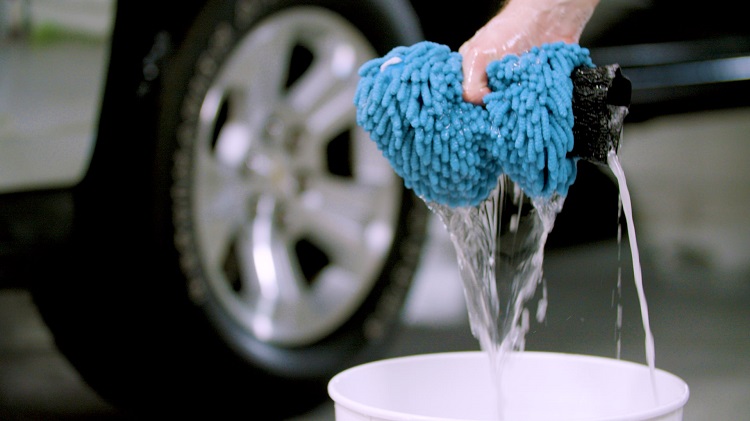
Washing your car out of direct sunlight is the only way to do the job correctly. When the sun contacts a car’s exterior, it causes excessive heat, making the job take longer than needed. The soapy water will dry more quickly, clinging to the surface and causing hard water spots before you even get a chance to go over the area with your wash mitt. Avoid these headaches by performing your hand car wash in a garage or in the shade. If you don’t have an indoor space or trees to shade the vehicle, wait for a cloudy day with no rain in the forecast to save yourself from doing the job twice.
5. Dry & Protect
Last but not least, there are actions you can take to expedite the drying process and leave a protective layer on the car to preserve the work you put into it. Use a waffle weave drying towel after washing and rinsing each panel to ensure a streak-free finish. The waffle design and microfiber fabric make these specialized towels much more absorbent than a traditional bath towel or beach towel. Additionally, these everyday towels can often leave scratches on the surface, whereas a waffle weave towel will leave the area smooth.
Once completely dry, use a graphene-based coating and a supplementary graphene-based detailer to create a protective layer over your freshly washed vehicle. If done correctly, your car will remain clean and protected for a long time, making these five hand car wash tips worth the time.
PRO BONUS TIP: If you don’t have access to a drying towel, use a leaf blower to disperse any remaining water on the car’s surface. The small engine equipment blows warm air to get the same results and saves you some manual effort. Either way, ensure your car is completely dry before you protect it with a two-step graphene system.







